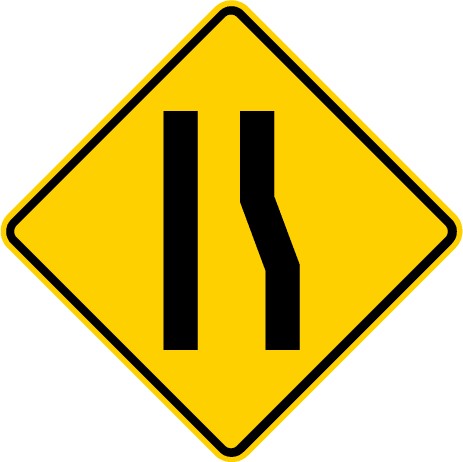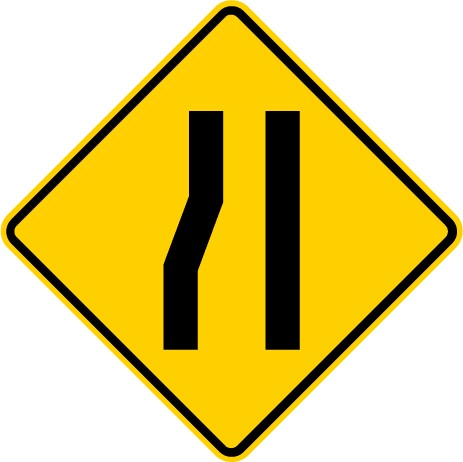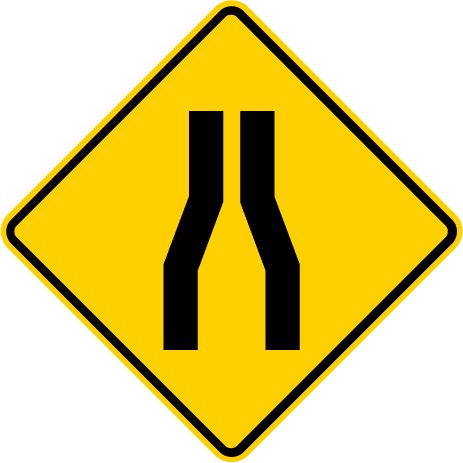Where a reduction in the width of the trafficable roadway presents a potential hazard to road users, signs identified in Table 6‑5 should be used. In addition, width markers (bridge end marker posts at road safety barriers, bridges, and other width restrictions) should be used where needed.
Bridge end marker posts at road safety barriers, bridges, and other width restrictions
Table 6‑5: Detailed descriptions for traffic signs for changes in road width
|
Sign code |
Example |
Description/use |
|---|---|---|
|
W13-1 (L) Road narrows – left side |
 |
The sign is not normally required on minor roads with low traffic volumes, but any reduction below 5.5m in width, which still allows two cars to pass, should be signed. No sign, other than either the special regulatory signs, indicating give way or priority, or the W13-1 supplementary sign plate may be attached to the W13-1 sign or its support. Should be installed on two–way sections of rural road where in the opinion of the RCA, a sudden reduction in the width of the road makes it unsafe for two opposing cars to pass without reducing speed. Should be installed in combination with special regulatory signs where the RCA considers it necessary to indicate priorities on single-lane sections of road (ie 5m trafficable width or less), refer to one-lane bridges and other roadways. One-lane bridges and other roadways Other road narrow signs are used at the end of passing lanes and are described in signs. For sign location, refer note 1 below. |
|
W13-1 (R) Road narrows – right side |
 |
|
|
W13-1 (B) Road narrows – both sides |
 |
Table 6‑5 note:
| Operating speed | Distance |
|---|---|
| 50km/h | 65m |
| 70km/h | 100m |
| 80km/h | 120m |
| 90km/h | 140m |
| 100km/h | 160m |